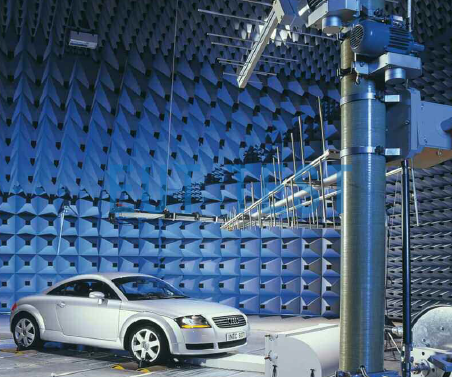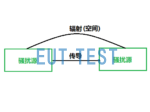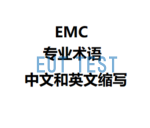Introduction:
Electromagnetic compatibility (EMCEMC testing is an important part of ensuring that electronic products work properly in an electromagnetic environment and do not interfere with other equipment. In modern electronic product design, effective EMC testing has become an essential step. This article will discuss the common EMC test equipment on the market and its role.
1. Electromagnetic interference (EMI) radiated emission test equipment
1.1 Harmonic and scintillation analyzers
A harmonic and flicker analyzer is a key device used to measure and analyze electromagnetic interference signals. It captures the high-frequency noise generated by equipment during operation and shows the intensity of interference at different frequencies through spectrum analysis. Harmonic analyzers are usually equipped with a variety of measurement modes, including real-time analysis, average calculation and peak detection, to help engineers quickly identify and locate sources of interference.
1.2 Signal Generator
Signal generators are used to generate various types of electromagnetic signals, including sine waves, square waves and pulse signals. It is mainly used in EMC testing to simulate external electromagnetic environment and test the anti-interference capability of equipment under different frequencies and amplitudes. By adjusting the parameters of the output signal, engineers can evaluate the performance of the equipment in different electromagnetic environments.
1.3 EMI Receiving Antenna
The EMI receiver antenna can be used in conjunction with an EMI receiver to measure the strength of the electromagnetic field in the environment or around the DUT. The antenna will output a signal through the 50Ω coaxial port to the receiver for testing.
1.4, Antenna tripod or antenna tower
Antenna tripods are used in situations where elevated antennas are not required for testing. Because they are compact, portable and inexpensive, the use of a tripod and antenna adapter is an ideal mounting accessory for small antennas.
The antenna tower raises the height of the antenna, and with the automation option also switches the polarization and pitch of the antenna, facilitating standards-compliant 360° rotation testing.
>Learn more about EMI test instrumentation equipment
2. Electromagnetic radiation (EMR) immunity test equipment
2.1 Radiation probes
A radiation probe is a tool used to measure the intensity of electromagnetic radiation emitted by equipment. It usually consists of an antenna and a signal processing unit that is capable of making radiation intensity measurements in different frequency ranges. By placing the radiation probe around the equipment, engineers are able to obtain detailed data on the radiation emitted by the equipment, which can be used to assess whether it complies with the relevant standards.
2.2 Radiation test chambers
Radiation test room is a specialized environment for EMC testing, usually a shielded room, which can effectively isolate external electromagnetic interference. The test room is equipped with a variety of test equipment, including antennas, signal generators and receivers. By testing in such an environment, more accurate electromagnetic radiation measurement results can be obtained.
>Learn more about EMS test instrumentation equipment
3. Conducted EMI test equipment
3.1 Conducted interference tester
The Conducted Interference Tester measures electromagnetic interference conducted through power or signal lines. The device can test the power input and output ports of a device to ensure that it does not output excessive interfering signals to the power network or other devices under normal operating conditions. Conducted interference testers typically support multiple standards, such as CISPR and FCC, to ensure compliance with test results.
Conducted interference meters commonly found in EMC labs:
- EMI Receiver
- spectrum analyzer
- oscillograph
- Click sound analyzer
3.2 Vector Network Analyzer
A vector network analyzer is an advanced test device that analyzes the amplitude, phase, and frequency characteristics of conducted interference signals. It can be used to evaluate the conducted characteristics of equipment in EMC testing, as well as to meter and calibrate conducted interference test equipment, helping engineers understand the signal integrity and conducted performance of equipment.
3.3 Conducted Interference Test Annex:
Conducted interference test accessories are used in conjunction with conducted interference testers, common accessories:
- Artificial Power Networks
- Coupling decoupling network
- Voltage probe
- current probe
- electric field antenna
- magnetic field antenna
- 50Ω RF Cables and Connectors
4. Integrated EMC test systems
4.1 EMC Test System
A comprehensive EMC test system integrates multiple test equipment into a single system capable of performing a full range of electromagnetic compatibility tests. Such systems are typically equipped with signal generators, harmonic analyzers, radiation probes, and other auxiliary equipment capable of performing a wide range of tests for EMI, EMR, and conducted interference. With this integrated approach, engineers can improve test efficiency, reduce interference between devices, and achieve more accurate test results.
5. Summary
Electromagnetic compatibility (EMC) testing is an important part of the electronic product development process that cannot be ignored. Choosing the right EMC test equipment is crucial to ensure market compliance and safety of products. By properly configuring equipment such as harmonic analyzers, signal generators, radiation probes and integrated EMC test systems, engineers are able to effectively identify and solve potential EMI problems, thus improving the overall product performance and user experience. In the rapidly developing electronics industry, continuous attention to the innovation and application of EMC test equipment will provide important support for enterprises in the fierce market competition.




